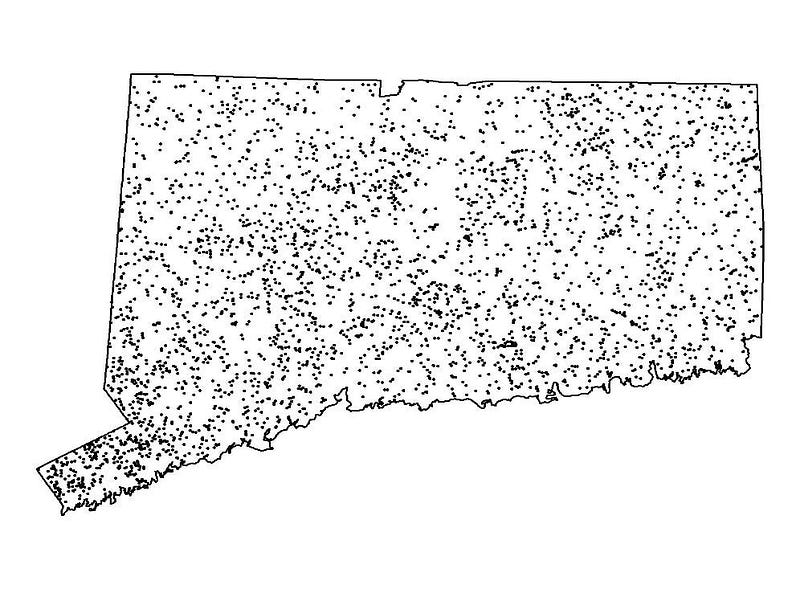Restoring Rivers: A Path to Resilience in the Face of Climate Change
Written on
Chapter 1: The River's Revival
Recently, Vermont was drenched with nine inches of rain in one day, leaving residents in Montpelier submerged in river water. This severe weather serves as a stark reminder of the ticking time bombs—over 10,000 outdated dams scattered throughout New England—that were constructed during the industrial era and are ill-equipped to handle the flooding challenges posed by climate change.
In contrast, a successful initiative in Colchester, Connecticut, highlights a more hopeful approach. On a crisp November morning, Steve Gephard, a fisheries biologist from the Connecticut Department of Energy and Environment Protection, along with Sally Harold from the Nature Conservancy, arrived at the property of 84-year-old Nan Wasniewski. Their mission? To dismantle a dam on the Jeremy River, restoring its natural flow for the first time in nearly 300 years. Wasniewski, clad in a blue windbreaker, watched as her once-valuable dam was demolished for just a dollar. In exchange, she was granted the chance to rejuvenate the river.
This effort forms part of a growing environmental movement aimed at liberating America’s rivers from the constraints of dams. While many dam removal efforts focus on larger, more famous waterways like the Columbia River, much of the ecological damage has occurred in smaller rivers along the Atlantic coast. Connecticut alone is home to over 4,000 dams that have severely impacted fish populations, including species like river herring and American eel—keystone species vital to local ecosystems.
Dams, now largely obsolete, function like ghost nets, harming aquatic life without serving a practical purpose. The transformation of the Jeremy River encapsulates the broader historical context of how early settlers exploited waterways, disregarding the needs of the original inhabitants. The river once flowed freely into the Blackledge River and eventually the Connecticut River, supporting thriving salmon populations.
The turning point came when Wasniewski's ancestor, Martha Carrier, was executed for witchcraft in Salem. Her husband moved their family to Connecticut, where they built a dam to harness the river's power for milling grain and timber. Gephard notes that remnants of this original wooden dam can still be found today, hidden beneath the concrete.

The initial phase of dam construction proliferated along the East Coast, often with local government support. Towns offered land and resources to those willing to build mills. However, many of these dams, initially intended to support burgeoning industries, later became relics, impeding the very ecosystems they were meant to utilize.
As industries evolved, the need for these dams diminished. The textile and paper industries moved away, leaving behind a trail of neglected infrastructure. In 2003, a fire destroyed the mill associated with Wasniewski's dam, and subsequent hurricanes compounded the challenges. "People often believe these old dams provide flood control, but they do just the opposite," Gephard explains. Dams can elevate water levels, resulting in flooding for surrounding properties when storms strike.
Realizing the dam's deteriorating condition and the burden it posed, Wasniewski was open to engaging with the Nature Conservancy. The journey to restore the Jeremy River began in 2011, with Harold spearheading funding efforts to gather nearly half a million dollars necessary for the dam's removal.
Over the past 15 years, Harold and Gephard have collaborated on several projects, successfully removing five dams from Connecticut's waterways. Their goal is to continue this work, with a list of many more dams that need attention. Convincing dam owners to part with their long-held structures often requires trust and a vision for the future.
In Wasniewski's case, Gephard presented three design concepts for the site: one featuring a repaired dam with a fish ladder, another with a partially lowered dam, and the last showing the dam completely removed. Upon viewing the third rendering, she envisioned a vibrant park in place of the old mill. "I imagined a beautiful park instead of the old mill, and I said, 'Let’s go with this one,'" she recalls.
The Wasniewski family possesses an old cannon forged in the valley, traditionally fired during significant family events. As Wasniewski anticipates the park's opening and the potential return of salmon to the river, she looks forward to ceremonially firing the cannon in celebration of the rejuvenated river and the hope of a new generation of fish.
Chapter 2: Unleashing Potential
In the video "Can the US Destroy the Three Gorges Dam?!?" we explore the implications of dam removal on a global scale, examining how such actions can reshape ecosystems and communities.
The second video, "This 300-Mile River Was Destroyed By Dams, But This Tribe Is Fighting Back," highlights grassroots efforts to reclaim and restore rivers affected by damming, showcasing the resilience of local communities.